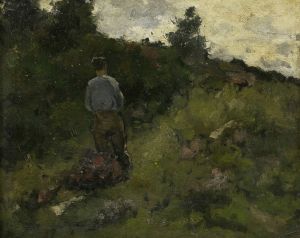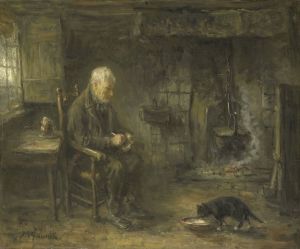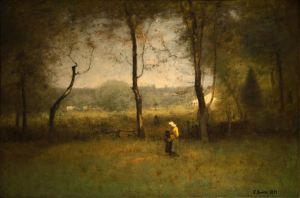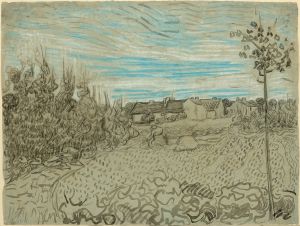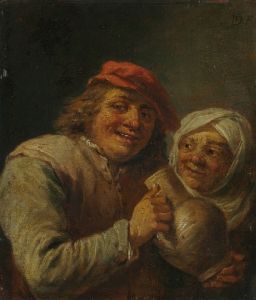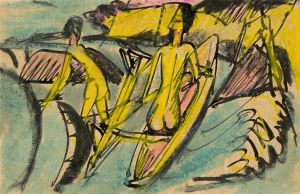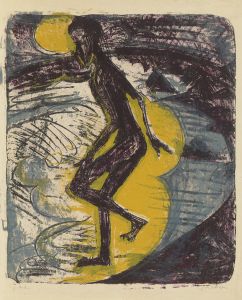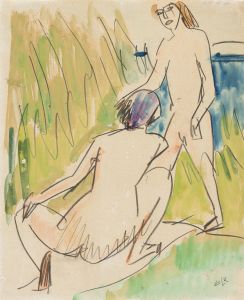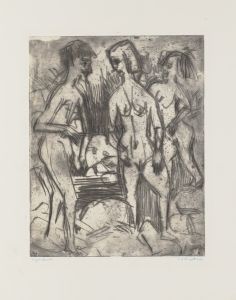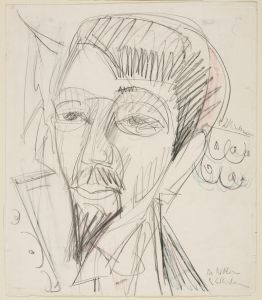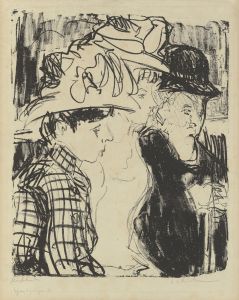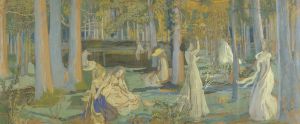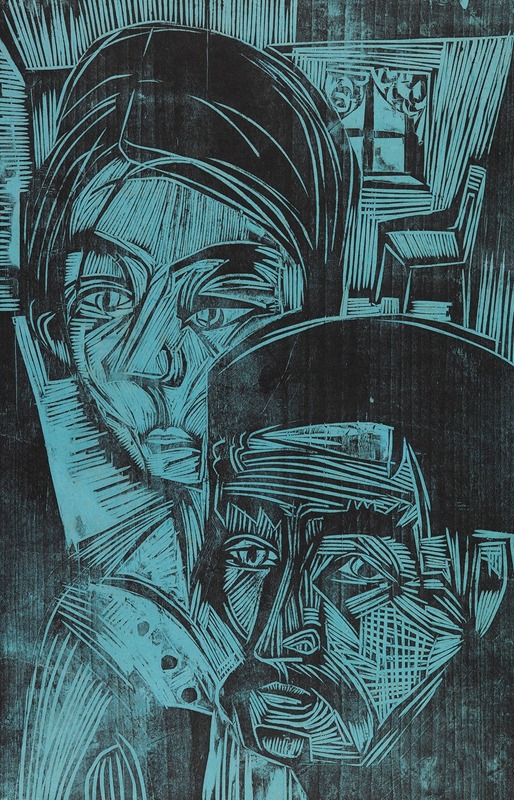
Bauernpaar in der Hütte
A hand-painted replica of Ernst Ludwig Kirchner’s masterpiece Bauernpaar in der Hütte, meticulously crafted by professional artists to capture the true essence of the original. Each piece is created with museum-quality canvas and rare mineral pigments, carefully painted by experienced artists with delicate brushstrokes and rich, layered colors to perfectly recreate the texture of the original artwork. Unlike machine-printed reproductions, this hand-painted version brings the painting to life, infused with the artist’s emotions and skill in every stroke. Whether for personal collection or home decoration, it instantly elevates the artistic atmosphere of any space.
Ernst Ludwig Kirchner, a prominent German expressionist painter and one of the founding members of the artist group Die Brücke, created the painting "Bauernpaar in der Hütte" (translated as "Peasant Couple in the Hut"). Kirchner's work is renowned for its bold use of color, dynamic compositions, and emotive subject matter, often reflecting the tensions and transformations of early 20th-century Europe.
"Bauernpaar in der Hütte" is a testament to Kirchner's interest in capturing the essence of rural life and the human condition. Painted during a period when Kirchner was deeply influenced by the landscapes and people of the Swiss Alps, this work reflects his fascination with the simplicity and authenticity of peasant life. The painting depicts a peasant couple inside a rustic hut, a setting that underscores the themes of intimacy and domesticity.
Kirchner's style is characterized by expressive brushwork and a vivid color palette, which are evident in this painting. The figures are rendered with a sense of immediacy and emotional depth, typical of Kirchner's approach to portraying human subjects. The use of color in "Bauernpaar in der Hütte" is particularly striking, with contrasting hues that create a sense of movement and vitality within the composition. This technique not only highlights the figures but also integrates them into their environment, suggesting a harmonious relationship between the people and their surroundings.
The painting is also notable for its composition, which draws the viewer's eye into the intimate space of the hut. Kirchner's use of perspective and spatial arrangement invites the audience to engage with the scene on a personal level, fostering a connection with the subjects. This approach is consistent with Kirchner's broader artistic goals of breaking down the barriers between art and life, encouraging viewers to experience the emotional and psychological dimensions of his work.
Kirchner's time in Switzerland, particularly in the Davos region, was a period of significant personal and artistic development. After moving to Switzerland in 1917, partly to recover from the psychological trauma of World War I, Kirchner found solace and inspiration in the alpine landscape and its inhabitants. This environment provided a stark contrast to the urban settings of his earlier works and allowed him to explore new themes and techniques.
"Bauernpaar in der Hütte" is a reflection of Kirchner's ongoing exploration of human relationships and the natural world. It embodies his belief in the power of art to convey profound emotional truths and to connect with viewers on a visceral level. The painting remains an important example of Kirchner's contribution to the expressionist movement and his ability to capture the complexities of human experience through his distinctive artistic vision.
Today, Kirchner's works, including "Bauernpaar in der Hütte," are celebrated for their innovative approach and enduring impact on modern art. His paintings continue to be studied and appreciated for their bold expression and insightful portrayal of early 20th-century life.





